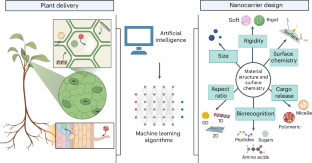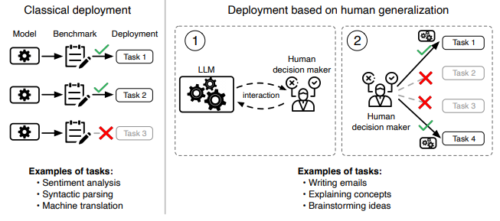2024-07-23 パデュー大学
<関連情報>
- https://www.purdue.edu/newsroom/releases/2024/Q3/researchers-examine-nanotechnological-methods-for-improving-agriculture.html
- https://www.nature.com/articles/s41565-024-01667-5
- https://pubs.acs.org/doi/10.1021/acs.est.3c09757
植物におけるナノ対応精密送達の実現に向けて Towards realizing nano-enabled precision delivery in plants
Gregory V. Lowry,Juan Pablo Giraldo,Nicole F. Steinmetz,Astrid Avellan,Gozde S. Demirer,Kurt D. Ristroph,Gerald J. Wang,Christine O. Hendren,Christopher A. Alabi,Adam Caparco,Washington da Silva,Ivonne González-Gamboa,Khara D. Grieger,Su-Ji Jeon,Mariya V. Khodakovskaya,Hagay Kohay,Vivek Kumar,Raja Muthuramalingam,Hanna Poffenbarger,Swadeshmukul Santra,Robert D. Tilton & Jason C. White
Nature Nanotechnology Published:06 June 2024
DOI:https://doi.org/10.1038/s41565-024-01667-5

Abstract
Nanocarriers (NCs) that can precisely deliver active agents, nutrients and genetic materials into plants will make crop agriculture more resilient to climate change and sustainable. As a research field, nano-agriculture is still developing, with significant scientific and societal barriers to overcome. In this Review, we argue that lessons can be learned from mammalian nanomedicine. In particular, it may be possible to enhance efficiency and efficacy by improving our understanding of how NC properties affect their interactions with plant surfaces and biomolecules, and their ability to carry and deliver cargo to specific locations. New tools are required to rapidly assess NC–plant interactions and to explore and verify the range of viable targeting approaches in plants. Elucidating these interactions can lead to the creation of computer-generated in silico models (digital twins) to predict the impact of different NC and plant properties, biological responses, and environmental conditions on the efficiency and efficacy of nanotechnology approaches. Finally, we highlight the need for nano-agriculture researchers and social scientists to converge in order to develop sustainable, safe and socially acceptable NCs.
批判的レビュー :植物における有機ナノデリバリービークルの取り込みと移動 Critical Review: Uptake and Translocation of Organic Nanodelivery Vehicles in Plants
Luiza Stolte Bezerra Lisboa Oliveira and Kurt D. Ristroph
Environmental Science & Technology Published: March 22, 2024
DOI:https://doi.org/10.1021/acs.est.3c09757
Abstract

Nanodelivery vehicles (NDVs) are engineered nanomaterials (ENMs) that, within the agricultural sector, have been investigated for their ability to improve uptake and translocation of agrochemicals, control release, or target specific tissues or subcellular compartments. Both inorganic and organic NDVs have been studied for agrochemical delivery in the literature, but research on the latter has been slower to develop than the literature on the former. Since the two classes of nanomaterials exhibit significant differences in surface chemistry, physical deformability, and even colloidal stability, trends that apply to inorganic NDVs may not hold for organic NDVs, and vice versa. We here review the current literature on the uptake, translocation, biotransformation, and cellular and subcellular internalization of organic NDVs in plants following foliar or root administration. A background on nanomaterials and plant physiology is provided as a leveling ground for researchers in the field. Trends in uptake and translocation are examined as a function of NDV properties and compared to those reported for inorganic nanomaterials. Methods for assessing fate and transport of organic NDVs in plants (a major bottleneck in the field) are discussed. We end by identifying knowledge gaps in the literature that must be understood in order to rationally design organic NDVs for precision agrochemical nanodelivery.



